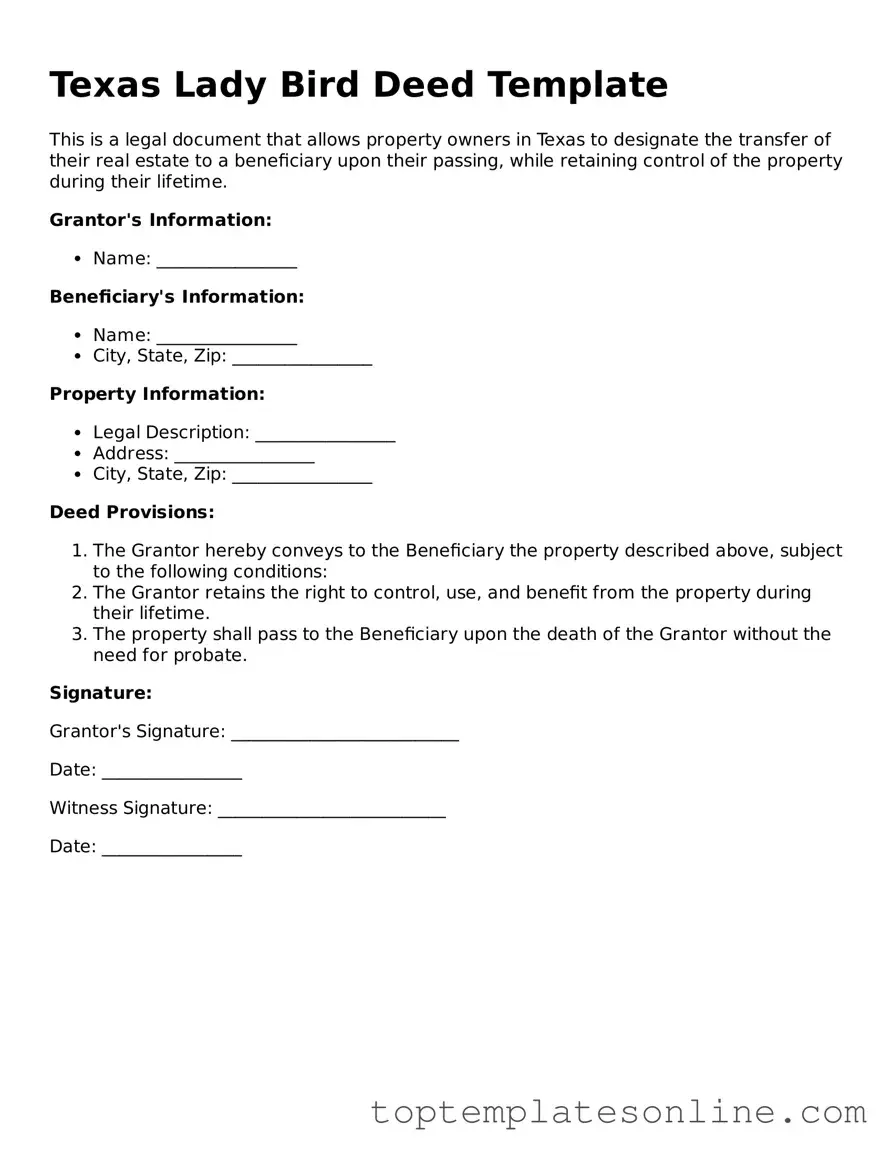Blank Lady Bird Deed Template for Texas State
The Texas Lady Bird Deed is a unique estate planning tool that allows property owners to transfer their real estate to beneficiaries while retaining control during their lifetime. This deed enables individuals to avoid probate, ensuring a smoother transition of property upon their passing. Understanding the benefits and implications of this form can help individuals make informed decisions about their estate planning needs.
Customize Lady Bird Deed Here
